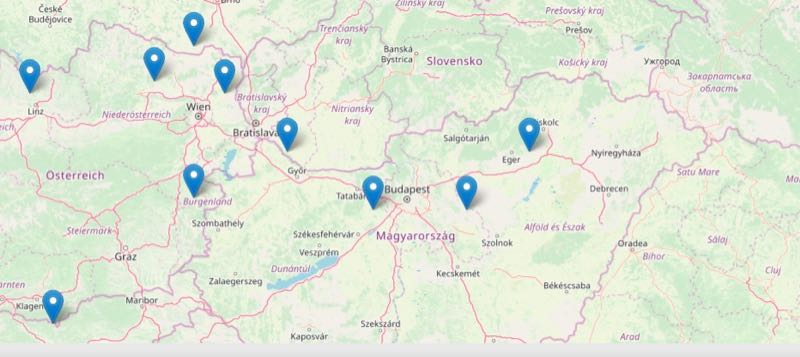Several readers have written recently asking about the DRM tests we mentioned in a previous post. These tests are being sponsored by the Budapest University of Technology from June 1, 2019 to May 31, 2020–thus, they’ve been on the air for several months already.
The programming, which was produced by Radio Maria, is being played in a loop–repeated over and over again. The signal is a modest 100 watts and is being transmitted via a 5/8 wavelength vertical on 26,060 kHz.
This is a low-power DRM broadcast using a very modest antenna, so I suppose it goes without saying that expectations should be in check. It’s a very long-shot for those of us living outside of Europe, of course. With that said, there are a number of KiwiSDR sites nearby Budapest:
You could certainly see the distinctive DRM signal on a KiwiSDR waterfall display, but I’m not sure how you’d decode it.
KiwiSDRs do have an IQ mode, however. I am very curious if anyone has ever used a KiwiSDR to decode DRM, perhaps, using Dream? Could the KiwiSDR IQ be fed into DREAM with a virtual audio cable?
Please comment–have you ever decoded DRM via a KiwiSDR site?
Do you enjoy the SWLing Post?
Please consider supporting us via Patreon or our Coffee Fund!
Your support makes articles like this one possible. Thank you!




Interesting choice of frequency given this low point in the solar cycle.
I remember when HCJB used same power in AM mode on a similar frequency closer to a solar cycle maximum that was easily heard in N.America. They used a cubical quad antenna on a rotator instead of a vertical, though.
Is there a module you can put on the 455Khz IF stream to decode DRM?
Be warned that the “latest” versions of Dream on SourceForge are very much “work in progress” for the next release. You will have better luck with earlier versions. I use v2.1.1-svn808
I regularly check DRM signals using remote KiwiSDRs, either by recording an IQ file for later playback with Dream, or feeding the IQ audio from my browser into Dream via a virtual audio cable for live decoding.
Cheers, Chris
It’s fairly easy to use the I/Q out on a KIWI sdr receiver to receive and decode DRM.
Using a KIWI receiver this morning, I was able to decode Radio Kuwait on 15.110.
I use virtual cables to route the audio from the web to the Dream Software program.
I have also copied DRM direct using the SDRPlay. I can usually copy Radio Kuwait,
Voice of Nigeria and Radio Romania at my location in New Jersey.
Using various web based KIWI sdr receivers, I have copied Radio Kuwait, Voice of Nigeria,
Radio Romania, WINB, and All India Radio.
To get a solid audio decode, I find that I need a fairly strong signal. On weaker signals, I get a decode telling me the station information, but the audio doesn’t decode.
73
Bill
WD9EQD
Smithville, NJ
Hi, Bill,
Thanks so much for the information! So I’m curious–does Dream still have a license fee? I think it used to have a one-time fee–at least, the software was free, but there way a key needed that you paid for. Again, if memory serves.
Cheers,
Thomas
No license fee but you do need a .dll file not found in the Dream package but is included with Sodira which is also free. So you can just copy the .dll over to Dream or just use Sodira. Like Bill I also use mine and other kiwiSDR in IQ mode for DRM.
Hi Thomas,
As far as I know the Dream software is free and is on the Source Forge site.
But you need the faad2_drm.dll decoder. You can compile this
or it is available pre-compiled on the web. Take a look at the RTL-SRD Tutorial
for more info:
https://www.rtl-sdr.com/tutorial-drm-radio-using-rtl-sdr/
73
Bill
WD9EQD
Smithville, NJ
I think the reason for keeping the drm codec separate from the Dream software is that the codec is patented and a royalty is required (even though with no extra cost over AAC licensig fees).
https://www.drm.org/digital-radio-mondiale-audio-codec-xhe-aac-at-no-additional-cost-to-boost-drm-receiver-industry/
Therefore delivering the patented drm codec without cost would be questionable in countries where the patent applies. However, In many countries software patents are not recognised by law. For example in European Union the software patent directive was rejected in EU parliament several years ago.
I noticed the Linux distribution I use, has the needed codec in its repositories. Unfortunately one still needs to obtain the Dream app separately as it is not in the repo.